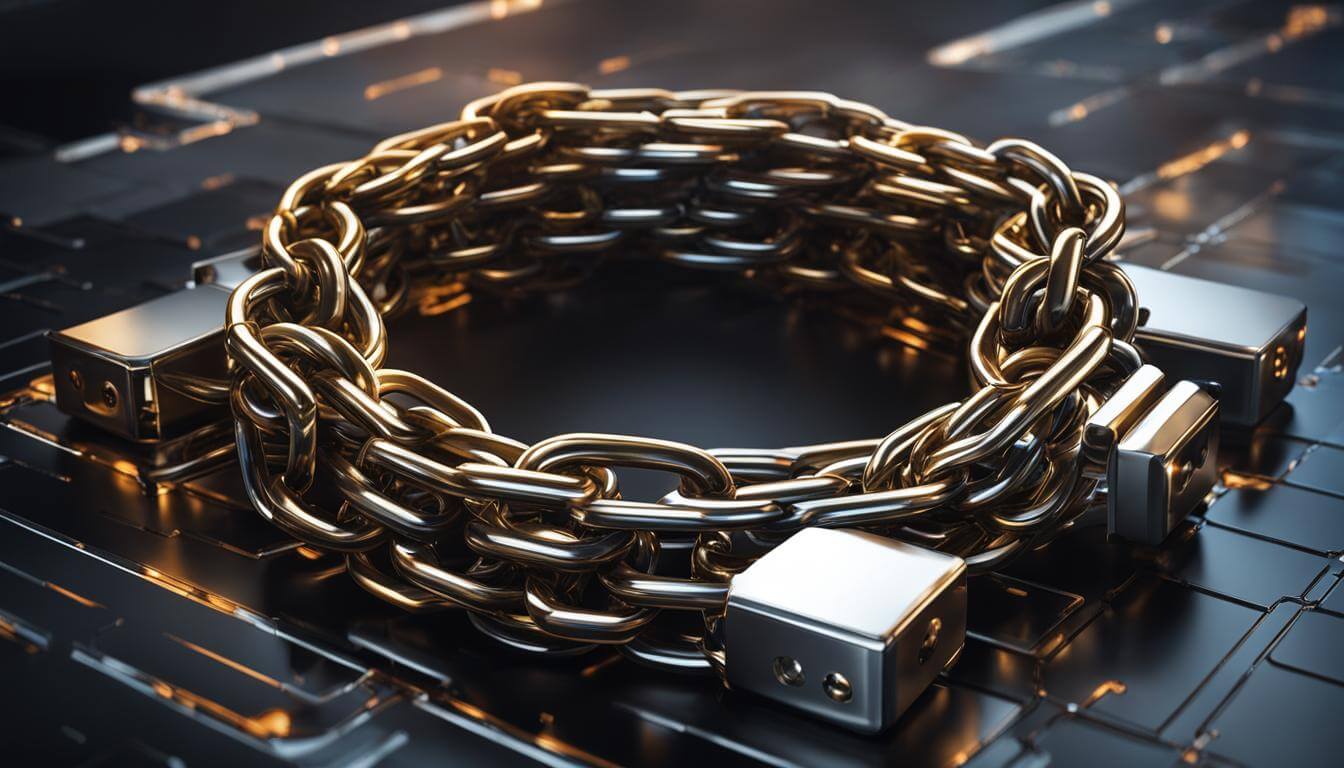As a small or medium-sized business owner, you know that cybersecurity is crucial for the protection of your business, clients, and employees. With cybercriminals constantly developing new methods to breach networks and steal sensitive information, it’s more important than ever to implement effective cybersecurity solutions.
In this comprehensive guide, we will explore the importance of SMB cybersecurity and provide you with expert insights and practical advice on how to protect your SMB from cyber threats. We will cover everything from identifying cybersecurity risks and vulnerabilities to implementing cybersecurity solutions and best practices.
By the end of this guide, you will have a deeper understanding of the SMB cybersecurity landscape and be equipped with the knowledge to enhance network protection, secure your data and implement best practices to maintain a secure SMB system.
Let’s dive in.
First, we’ll start with a discussion of the current cybersecurity landscape and the reasons why SMBs are increasingly targeted by cybercriminals. We’ll then guide you through the process of identifying and assessing the cybersecurity risks and vulnerabilities that your SMB may face.
From there, we’ll delve into the various cybersecurity solutions available for SMBs, including antivirus software, firewalls, and encryption. We’ll also explore the benefits of partnering with cybersecurity service providers to enhance your SMB’s security posture.
We’ll then outline the best practices that SMBs should follow to minimize the risk of cyber attacks, including employee training, strong password policies, regular software updates, and secure remote access.
To wrap up, we’ll emphasize the importance of monitoring and evaluating your SMB’s cybersecurity posture and provide guidance on conducting regular risk assessments, staying updated on emerging threats, and adapting your security measures accordingly.
With this guide, you’ll be equipped with the knowledge and tools to secure your SMB against cyber threats and safeguard your business for the future.
Understanding the SMB Cybersecurity Landscape
As a small to medium-sized business owner, it’s essential to understand the cybersecurity landscape and its unique challenges. According to the statistics, 43% of cyber attacks specifically target small businesses. Unfortunately, this trend is only increasing.
One of the main reasons why SMBs are targeted is due to their lack of resources to invest in cybersecurity measures. Additionally, they may not have the knowledge or expertise to identify and protect against potential cyber threats.
Common Cybersecurity Risks for SMBs
Some of the most common cybersecurity risks for SMBs include:
- Phishing scams: fraudulent emails that trick users into providing sensitive information.
- Malware: malicious software that infiltrates a system and causes harm.
- Ransomware: a type of malware that locks users out of their systems and demands payment for access.
- Human error: unintentional mistakes made by employees, such as clicking on a suspicious link or using weak passwords.
These risks can have severe consequences, including data breaches, financial loss, reputation damage, and even legal penalties.
The Importance of SMB Cybersecurity
Proper cybersecurity measures are not only important for protecting your business but also for maintaining customer trust and compliance with regulations. In fact, some industries, such as healthcare and finance, have legal requirements for data protection.
Investing in cybersecurity can also bring long-term benefits, such as increased efficiency and productivity, as well as a competitive advantage. By demonstrating your commitment to cybersecurity, you may attract more customers and partners who value security and privacy.
“As a small business owner, you must prioritize cybersecurity to protect your business, your customers, and your reputation. Don’t wait until it’s too late to take action.”
Identifying Cybersecurity Risks and Vulnerabilities
Before implementing cybersecurity solutions, you must first identify the risks and vulnerabilities that your SMB may face. Cyber attacks can occur through various entry points, including:
- Phishing emails and social engineering
- Outdated software and hardware
- Weak passwords and authentication mechanisms
- Third-party access to your systems and data
- Insider threats from employees or contractors
Once you have identified these potential risks, you can take steps to mitigate them and secure your SMB’s systems and data. Here are some essential measures to consider:
| Measure | Description |
|---|---|
| Access control policies | Implement strict policies for granting access to your systems and sensitive data. Limit access to only those who need it, and monitor and control third-party access. |
| Regular software updates | Ensure that all software and hardware in your SMB’s network are regularly updated with the latest security patches and updates. Outdated software and hardware are a common entry point for cyber attacks. |
| Firewalls and encryption | Implement firewalls and encryption protocols to protect your SMB’s network from unauthorized access and data breaches. These tools can also prevent the spread of malware and viruses. |
| Employee training | Train employees on best practices for data security, including strong password policies, recognizing and reporting suspicious emails, and safe web browsing habits. |
| Data backup and recovery | Regularly backup your SMB’s data to protect against data loss and ensure business continuity in the event of a cyber attack. |
By implementing these measures and regularly assessing and updating your cybersecurity posture, you can secure your SMB’s systems and data and protect against potential cyber threats.
Implementing Cybersecurity Solutions
When it comes to protecting your SMB from cyber threats, implementing cybersecurity solutions is crucial. There are various tools and technologies available that can enhance your SMB’s security posture and ensure the safety of your sensitive data.

Antivirus Software
One of the essential cybersecurity solutions is antivirus software. Antivirus software helps to detect and remove malware, viruses, and other malicious software that could potentially harm your SMB’s systems and networks. When selecting antivirus software, make sure to choose one that provides comprehensive protection for all your devices and has frequent updates to stay ahead of emerging threats.
Firewalls
Firewalls are another critical cybersecurity solution that can help secure your SMB’s network from unauthorized access. Firewalls filter out incoming and outgoing traffic based on predetermined security rules to ensure that only authorized traffic is allowed in and out of your SMB’s network. This can help prevent cyber attacks that may attempt to exploit vulnerabilities in your network.
Encryption
Encryption is the process of transforming sensitive data into an unreadable format to ensure its confidentiality and prevent unauthorized access. By encrypting your SMB’s data, you can ensure that even if cybercriminals manage to access your data, they won’t be able to read it. Encrypting data in transit, such as emails and file-sharing, is also important to prevent interception by hackers.
Cybersecurity Service Providers
Partnering with a cybersecurity service provider can also enhance your SMB’s security posture. Cybersecurity service providers offer a range of services, including threat monitoring, incident response, and training, to help protect your SMB from cyber threats. By outsourcing your cybersecurity needs, you can focus on running your business while leaving the cybersecurity to the experts.
Implementing cybersecurity solutions may seem overwhelming, but taking these steps is crucial to protect your SMB from cyber threats. By investing in the right tools and services, you can secure your systems, networks, and data, and ensure the long-term success of your business.
Cyber Threat Prevention Best Practices
Prevention is the best defense against cyber threats. By implementing best practices, you can reduce the likelihood of falling victim to cybercriminals. It’s important that every employee in your SMB is aware of these practices and follows them consistently to maintain a secure business environment.
Employee Training
One of the most significant vulnerabilities of SMBs is their employees. Many cyber threats come through email, making it vital to train employees in identifying phishing attacks. Training should include an explanation of what phishing attacks are, how to spot them, and how to avoid them. It’s essential to caution employees not to open any suspicious emails, click on links or download attachments from unknown sources, or provide confidential information like login credentials or financial data to anyone via email.
Strong Password Policies
Enforcing a strong password policy is critical to SMB cybersecurity. Passwords should be long and complex, consisting of numbers, letters, and special characters. Passwords should be changed regularly, and employees should avoid reusing passwords across different accounts.
Regular Software Updates
Many cyber attacks are due to outdated software with unpatched vulnerabilities. To prevent such attacks, update your software regularly, and install security patches promptly. Also, ensure that all software and devices used in the workplace have the latest security updates installed.
Secure Remote Access
Remote work is becoming increasingly prevalent, and it’s essential to have a secure remote access policy. Use a virtual private network (VPN) to secure remote access to your business’s network. Ensure that employees have strong passwords and multi-factor authentication set up when accessing the VPN.
Backup and Disaster Recovery Plan
In case of a cyber attack, it’s essential to have a backup and disaster recovery plan in place. Ensure that your data is regularly backed up to an offsite location so that in the event of a cyber attack, you can recover your data quickly.
Restrict Access to Sensitive Data
Limit access to sensitive data to only essential employees. Ensure that employees with access to sensitive data are authenticated and authorized, and the data is encrypted both at rest and in transit. Regularly conduct an audit of all data access to ensure that unauthorized individuals do not have access to sensitive data.
Detecting and Responding to Cyber Threats
As SMBs implement proactive security measures to prevent cyber attacks, it’s important to also have a plan in place for detecting and responding to any threats that do occur.

One crucial aspect of cyber threat detection is network monitoring. By regularly monitoring your network, you can detect any suspicious activity or anomalies that may indicate a potential attack. This can include monitoring network traffic, system logs, and user behavior.
In addition to network monitoring, having an incident response plan in place can help minimize the impact of a cyber attack. An incident response plan outlines the steps your SMB should take in the event of a security breach, including who should be notified, how the incident should be contained, and the steps to restore systems and data.
Employee awareness is another important aspect of detecting and responding to cyber threats. By providing regular training on how to identify suspicious emails, links, and attachments, your employees can be the first line of defense in detecting potential threats.
Example Incident Response Plan
| Step | Action |
|---|---|
| Step 1 | Isolate the affected system or network |
| Step 2 | Notify the designated point of contact for cybersecurity incidents |
| Step 3 | Gather information about the incident, including the source and scope of the attack |
| Step 4 | Contain the incident by removing any affected systems from the network or disabling affected accounts |
| Step 5 | Investigate the incident to determine the extent of the damage and the cause of the attack |
| Step 6 | Remediate the incident by eradicating the malware or other malicious code and restoring data and systems |
| Step 7 | Report the incident to relevant authorities or regulatory bodies if required |
By implementing a robust incident response plan and regularly monitoring your network, your SMB can minimize the impact of cyber threats and quickly respond to any incidents that occur.

Continuous Improvement and Cybersecurity Maintenance
Protecting your SMB from cyber threats is an ongoing process, and it’s essential to stay vigilant and adapt your cybersecurity measures as needed.
The Importance of Monitoring
Regular monitoring is crucial to maintaining network protection and preventing cyber threats. By monitoring your systems and networks, you can detect potential vulnerabilities before they turn into full-blown cyber attacks.
Additionally, staying up-to-date on emerging threats and new attack techniques is essential to ensure your SMB’s cybersecurity is effective. You can do this by subscribing to relevant cybersecurity newsletters, attending industry events, and networking with cybersecurity professionals.
Regular Risk Assessments
Conducting regular risk assessments is an important aspect of continuous improvement in cybersecurity maintenance. By regularly assessing your SMB’s cybersecurity posture, you can identify potential weaknesses and vulnerabilities and take steps to eliminate or mitigate them.
Your risk assessments should include a comprehensive evaluation of all your systems and networks, as well as an analysis of the risks associated with third-party vendors and employees who have access to your sensitive data.
Adapting Your Security Measures
Cyber threats are constantly evolving, and your SMB’s cybersecurity measures must evolve with them. As new vulnerabilities and attack techniques emerge, you must adapt your security measures to address them properly.
Note that cybersecurity solutions and services often require updates, and staying current with these updates is critical to network protection. By keeping your cybersecurity solutions and tools up-to-date, you can ensure that they are functioning effectively and that they continue to protect your SMB against cyber threats.
Conclusion
Continuous improvement and cybersecurity maintenance are essential for SMBs to stay protected against cyber threats. By monitoring your systems, conducting regular risk assessments, and adapting your security measures, you can minimize your SMB’s risk of a cyber attack. Remember, prevention is always better than response, and staying ahead of potential cyber threats is key to the long-term success of your SMB.









Comments 1
Comments are closed.